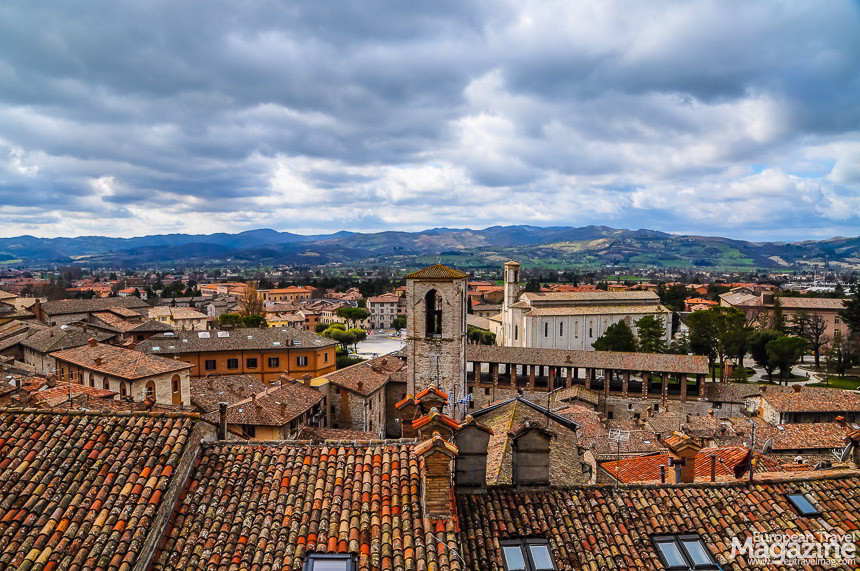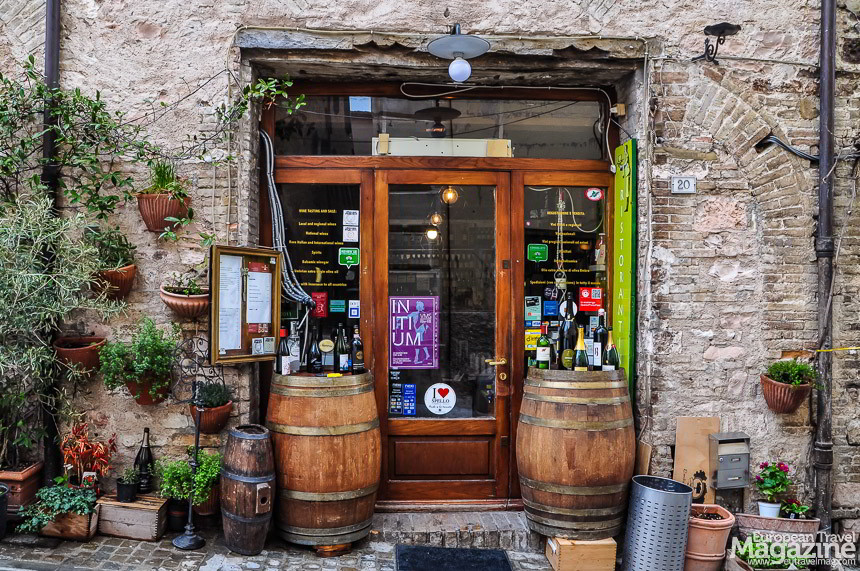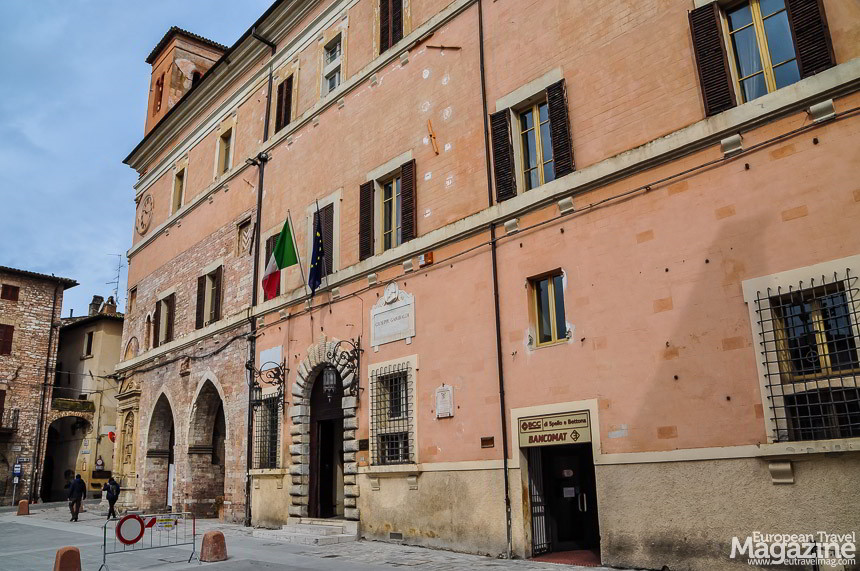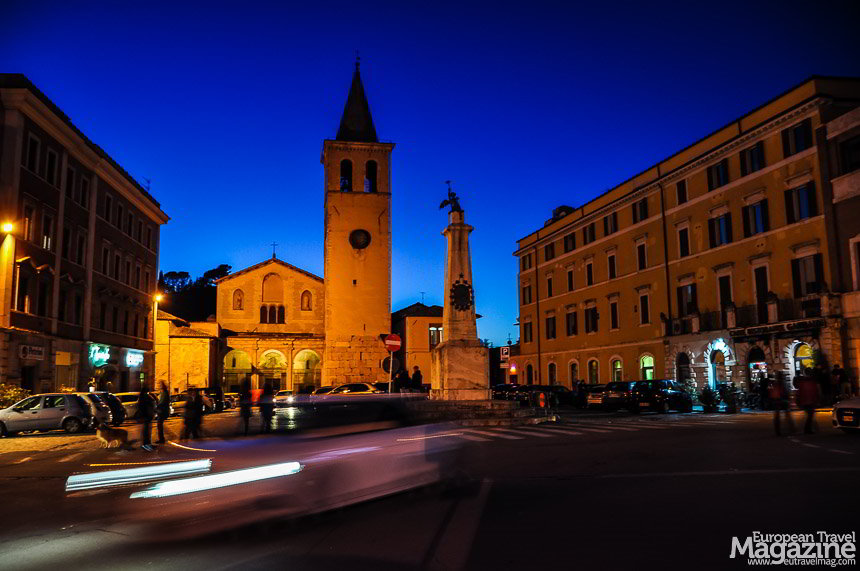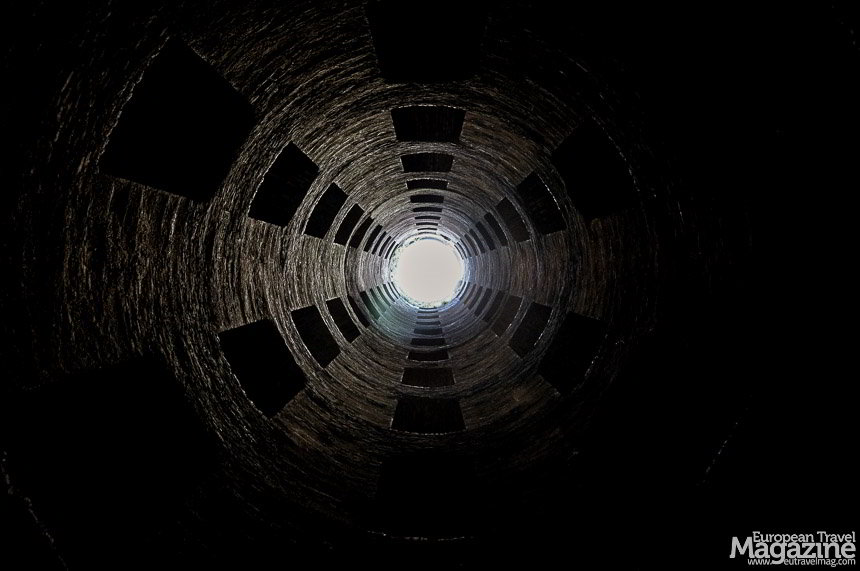An authentic Italy. That’s what you dream of when going, right?
We all wish for that unique experience, where you feel the connection to the place, the people and the past. Trinkets and tourists (well, other tourists) obscure that connection and allows only for a superficial encounter. Fortunately, there are still many such places in Italy. And Umbria is one one them.
It has maintained its heritage and kept its traditions live and well. Culture is alive and thriving in these petrified places of history. It’s a place of magic. You can sense it in the cobblestone, labyrinthical streets. You can feel it when you look out upon the landscape. C.S Lewis got it quite right when he named the enchanted Kingdom of Narnia after a place right here. Discover with us the 10 Most Enchanting Hilltop Towns of Umbria.
Gubbio
One of the northernmost towns of Umbria, Gubbio is perhaps not as much hilltop than hillside. It is only 4 kilometres from the Marche region’s border, and adorns the northern hillside of the upper Chiascio valley, offering amazing views as it sits sunbathed up the hills.
Even before you get out of your car at the (free on workdays) car park, you realize the historic grandeur of this smallish town as you eye the remains of the Roman Theatre just next to the car park. The ruins are free to stroll around, while you try to snap a picture of the hillside town with the ancient theatre in front. The historic architecture really is condensed here.
The WOW effect is brought about at Piazza Grande, just in front of Palazzo dei Consoli, originally built as the seat of government for the region and now functions as museum. This imposing 14th century palace bestows medieval grandiosity and a sense of solidity to the square, while on the other hand you have this amazing view to the town below and valley at your feet. You truly feel like you’re king of the world at this spot, and understand why this is one of the most majestic and audacious building projects carried out in the Middle Ages, bearing witness to the ambitious nature of Gubbio’s political power.
Stroll around town and check out the 12th century Cathedral, the medieval Loggia dei Tiratori and adjacent Church of San Francesco, the fabled Fontana del Bargello and the picturesque Ortobello quarter. And if you still have energy to burn, scale the mountainside of Monte Ingino to the 16th century Basilica di Sant’Ubaldo for a view that just IS a little better.
- Gubbio’s official tourism website
- Palazzo dei Consoli museum website
- Gubbio on Umbria Tourism’s website
Assisi
Immortalised through Saint Francis of Assisi who was born here and started missioning in his 20ies in the beginning of the 13th century. Much like the story of Buddha, he was born as the son of rich family and spent a luxurious and care-free youth, only to receive a divine calling, urging him to give up his riches and live amongst the poor.
The UNESCO World Heritage town of Assisi is defined by the imposing basilica complex that bears his name as well as the many religious visitors, coming to pay homage to the gentle saint. If you arrive by car, there are not many other options than to park at the paid car parks below the city walls. Advantage is, that escalators will take you to the historic quarter, where you can stroll around and check out the other historic and religious buildings around town: Basilica di Santa Chiara, Cattedrale di San Rufino, Chiesa Parrocchiale di Santa Maria Maggiore, Casa di San Francesco, Chiesa di Santo Stefano, Chiesa di S. Maria sopra Minerva (which is actually an old, Roman temple) and Abbazia di San Pietro. There are so many to choose from, but one that dwarfs the others in size and importance: Basilica of San Francesco with the cript and Sacro Convento.
There are so many sights which should be described in more detail, but we’ll have to save that for a feature article, because Assisi definitely deserves attention, also for its Roman, Medieval, Renaissance and Baroque sites and monuments. When you leave, be sure to pop by the equally impressive Basilica di Santa Maria degli Angeli only 10 minutes away in Porziuncola. Here, in the little chapel inside, St. Francis drew his last breath.
Spello
Voted one of the Most Beautiful Villages of Italy, this fortified hilltop village is only 10 km south of Assisi. If you imagine Monte Subasio looking a little like a bent banana, Assisi would be at the top end and Spello the lower end of said banana.
Spello is like a precious book consisting of many pages of history: You can read it all in its art and architecture. Starting from the southern part (the Borgo area) and climbing up to the Porta dell’Arce (the Belvedere), you visually retrace the history of a town, where the ancient Umbrian, Roman, Medieval and Renaissance presences have survived. It was named Hispellum by the Romans in the 1st century and you can see its Roman heritage in the three gates Porta Consolare, Porta di Venere and Porta Urbica plus traces of three more. The town’s 2 km long city walls of today are a combination of Roman and Medieval structures as they had to expand the town to the north during the Middle Ages.
The Middle Ages are also present in the around 17 churches, convents and chapels that I’ve counted inside the historic walls and its Town Hall. The Renaissance shines inside the churches; in the frescoes of Pinturicchio and Perugino in the Baglioni chapel, and churches of Sant’Andrea and Santa Maria Maggiore.
Spello is a beautiful example of the condensed history that is found all over Umbria and it’s a pure pleasure to stroll these ancient streets and feel the presence of history.
- Spello’s Official Tourism website (in Italian)
- Spello on Umbria Tourism’s website
- Spello on Wikipedia
Montefalco
The Wine Capital of Umbria is surrounded by a patchwork of vineyards on soft hills. Amidst these rolling hills, Montefalco commands a hill of its own. Like an alchemist converting lead to gold, it transforms the grapes of the countryside into wine, concentrating and liquifying the essence of the Umbrian landscape. Savour the luxury of terroir and enjoy some Montefalco wine while you’re in Umbria.
The town itself is charming and manageable in one or two hours. You can park (free!) at the edge of town and head for the heart of it: The Piazza del Commune, where the medieval town hall is backdrop for many seasonal celebrations, such as Easter ceremonies and Wine festivals. Montefalco is considered one of the Most beautiful Villages in Italy according to I Borghi Più Belli D’Italia and forms part of the viticulture club Strada del Sagrantino, where Sagrantino is the indigenous grape of the area.
It’s a lovely town to stroll around in, to visit the small churches and taste the native wine, to take in the countryside and sit a local café and feel the essence of Umbria.
Trevi
Trevi sits like a petrified shell on top of a small hilltop by the foot of Monte Serano in the Umbrian valley, surrounded by a sea of olive trees. Its many medieval streets spirals the hilltop and crowns the town with the Cathedral of Saint Emiliano. It was an important town dating back to the Umbrian era, where its was known as Trebiae. It became a Roman Municipium in the 1st century and was especially renowned for its olive oil production.
The oldest olive tree in the area is named after the Saint Emiliano and can be found just 2 km to the south. With its around 1.700 years of age, imagine what it must have witnessed: The downfall of the beforementioned Romans who probably planted it, and the medieval feuds between Foligno and Spoleto, that left Trevi as an unfortunate punching bag. It must have looked into the Via Flaminia road, that connected the area to Rome (and the rest of Europe) even before the Common Era and made possible the export of the olive oil.
You can learn all about the history and importance of olive oil for Trevi in the unmissable San Francesco Museum Complex, that is situated in a former, medieval convent. The complex also encompasses an archaeological section and a Pinacoteca, consisting largely of religious paintings, most notably The Madonna and Child by Pinturicchio.
As with Spello, both its Roman and Medieval past can be read in its walls and gates and it’s a delight to follow the walls around the city and enjoy the countryside before venturing into the labyrinthic centre. Get lost and find your way to a restaurant for some pasta with wild boar for lunch. After all, you are in the green heart of Umbria.
Campello sul Clitunno
Campello sul Clitunno deserves mention, not only because it stands so precious and petite on the hillside, but also because of its nearby UNESCO World Heritage designated Tempietto del Clitunno.
Lets start with town – or rather towns. Above, you have Campello Alto which is the old, fortified town you can see hovering above the Umbrian valley. It’s only a small, walled hamlet which developed around a castle built in the 10-11th century. There’s not much going on up here, except two boutique hotels and a small church BUT it has an amazing view of the valley. Then there’s the lower Campello Sul Clitunno, based in the valley, or “on the Clitunno river” as the name suggests. You then ALSO have a hamlet on the hillside just above the Temple of Clitumnus, where Castle of Pissignano with its elongated tower dominates the scene.
In the valley, near the spring of the Clitunno river, you find the unassuming Temple of Clitumnus. It forms part of the UNESCO World Heritage group called Longobards in Italy – Places of the Power, which consists of 7 places in Italy, that testify to the Lombards’ major role in history. While it was sacred site of Jupiter Clitumnus even back in antiquity, the temple you see today is surprisingly not an old, Roman temple, but a small church built in the 7th century, in the form of an Ancient Greek style Corinthian temple and dedicated to San Salvatore.
Finish off with a lunch, coffee or cold drink at the Clitunno river’s springs, where poets such as Pliny, Virgilio, and Byron have sojourned. But be aware – it gets crowded in the summertime.
- Campello Sul Clitunno official website (in Italian)
- Campello sul Clitunno on Umbria’s official Tourist Website
- Temple of Clitumnus on Wikipedia
Spoleto
Perugia may be the regional capital of Umbria, Assisi its spiritual centre, but after one month of roaming the region, we must conclude that Spoleto is its crowning piece. As it sits enthroned above the Umbrian valley with its back to the hills of the south, it looks to the north, to the beautiful towns of Trevi, Montefalco, Spello, Assisi and Perugia.
But Spoleto has its own unique charm, the successful marriage of history and culture: a pedestrian city centre with inviting, cobblestoned streets, a history that spans over several millennia and a rich cultural scene.
Like many other hilltowns in Umbria, Spoleto offers a travellator, or moving walkway, that’ll take you from the (paid) parking garage Posterna in the lower part of town to the castle, that’s the very pinnacle of Spoleto. For free. This system saves you time and energy and makes Spoleto a popular destination for all ages.
Take a stroll around the castle of Rocca Albornoziana on the fabled and charming promenade Giro della Rocca that’ll afford you amazing views to the green mountain of Monteluco and the medieval aqueduct Ponte delle Torri. Venture down into the historic town and discover its Roman roots, many museums and take in its medieval magic. Read more in our feature of Spoleto – Crown of Umbria.
Narni
Narni overhangs a narrow gorge of the Nera River at 240 metres and very close to the geographical centre of Italy. The area around Narni was already inhabited in the Paleolithic and Neolithic Ages and records mention a town here called Nequinum as early as 600 BC.
Like many of the smaller towns of Umbria, Narni is still of strikingly medieval appearance today, with narrow cobblestone streets and stone buildings but many of its Roman heritage is visible too. The most notable is the Ponte d’Augusto, a Roman marble arch bridge, built to carry the Via Flaminia road over the river Nera. It was built around 27 BC and the 30 m high structure is one of the largest bridges ever constructed by the Romans.
Narni is overlooked by the might Rocca Albornoz fortress and holds many medieval churches and palaces with interesting frescoes. While those are the normal ingredients that make up a delightful Umbrian Hilltown Cocktail, Narni has another additive. A subterranean one. Narni Sotterranea organise subterranean tours, either to crypts, cisterns and cells underneath the convent of S. Domenico, a visit to the underground Roman aqueduct “Formina” or an underground adventure route where you can scale a Tibetan bridge, climb an underground wall and challenge yourself in a subterranean scene.
And if you think that Narni sounds like Narnia, you’re right! The imaginary land of Narnia, described in the works of C. S. Lewis, was named after Narni after he came across the name in an atlas as a child. Now, aren’t you even more exited to visit?!
Todi
Todi sits on an elevated position on a two-crested hill overlooking the east bank of the Tiber river. It commands stunning views overlooking the surrounding Umbrian countryside in all directions, and it’s not a far stretch to think that is name might have originated from the Etruscan word tutus (fortified hilltop).
And yes, even though Todi was founded by the Umbrians around 2.700 BC, it was later taken over by the Etruscans, and then in 89 BC by the Romans who levelled Todi’s two hilltops to make Piazza del Popolo, the historical centre of the town which probably looks very similar today as it did during the Middle Ages.
The Etruscans settled mostly in nowaday Tuscany and Lazio, but its easternmost settlements included Todi and Orvieto. Here, they thrived from around 900 BC and up until Roman time. As with many other fortified towns, you can read its history in its city walls. Todi has triple walls! The innermost wall, built of rough grey travertine stone, is Umbrian or Etruscan, the middle wall is Roman, and the outside wall dates from the early Middle Ages.
I recommend you sit at a café on Piazza del Popolo, which is flanked by all these grand medieval buildings like the Concattedrale della Santissima Annunziata, Palazzo del Popolo, Palazzo del Capitano and Palazzo dei Priori and enjoy your cappuccino. Think of how they each represent the different power fractions of the medieval society. If you’re lucky enough to be here on market day, you can even hear history resonate from their walls.
Orvieto
Probably the most spectacular cathedral in Umbria. No, not probably. Definitely. But let’s begin somewhere else. At the beginning.
Orvieto’s origins go back to the Etruscan civilization with early settlements dating back to the 9th century BC, and it certainly was an important settlement. When the Romans took hold of the city after 263 BC they kept the institutions, customs and language of the Etruscans, but changed its name to Urbs Vetus, from which the present-day name of Orvieto stems. After the collapse of the Roman Empire, it was occupied first by the Goths, then the Byzantines and then the Lombards of the Duchy of Spoleto before it became an independent commune in the 10th century. Medieval Orvieto’s power and wealth reached its peak in the 13th and 14th centuries, as can be seen from the splendid buildings that have survived to the present day: the Palazzo Comunale from 1216, Palazzo del Popolo and Torre del Moro also from the 1200s and the amazing Cattedrale di Santa Maria Assunta from 1290 to 1591.
The Cathedral sits in a prominent position, here at the pinnacle of the volcanic plug that is Orvieto and dwarfs all other buildings. It was designed by Lorenzo Maitani in the 13th century and is one of the most majestic creations in Italian architecture. Its magnificent Gothic facade is decorated with mosaics and bas-reliefs, depicting biblical stories from the Old and New Testament. The four statues depicting an Angel, Lion, Eagle and Ox symbolise the four Evangelists Matthew, Mark, John and Luke. The interior of the cathedral is equally impressive, with wonderful frescoes of Fra Angelico and Luca Signorelli.
Just like Todi, Orvieto has secrets under the surface, excavated in the soft tuff stone that makes up the volcanic plug. The underground city boasts more than 1200 tunnels, galleries, wells, stairs, cellars, cisterns that have been dug out during many centuries. Indeed, many noble homes were equipped with an escape tunnel from where they could flee the elevated city during times of siege.
More info
- Umbria Tourism’s official website
- Umbria Experience website
- Umbria on Borghi Più Belli D’Italia website
- Bella Umbria










